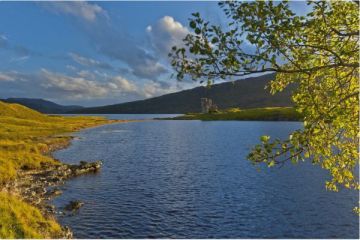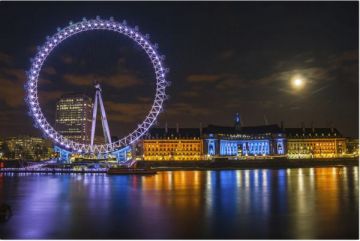W3
There has been sporadic human habitation for 12,000 years in this area which was once watered by the now piped Stamford Brook and its tributary the Bollo (‘bull hollow’) on their course to the Thames at Hammersmith. Anglo-Saxons established the name (Old English actun, the settlement among the oaks), but documentation of this comes only in the 12th century.
In Domesday Book, Acton was merely an anonymous part of the Bishop’s manor of Fulham. Rural but conveniently close to London, it was a favoured retreat for the wealthy and influential until a century ago. Among notable residents were Francis Rous, the divine and Provost of Eton, who lived at Bank House, at the west end of the High Street (demolished in 1870); Richard Baxter, the nonconformist divine, who recorded in his memoirs that, during the great fire, charred leaves of books from the burning warehouses around St Paul’s were picked up near his house; Sir Matthew Hale, the Lord Chief Justice, who took over Baxter’s house and is commemorated in Hale Gardens; Edward Bulwer Lytton, who rented Berrymead for his wife in 1835–6; and Dr John Lindley, the botanist, who lived at Bedford House in what became Bedford Park and, at an earlier date, at Fairlawn, Acton Green, which was demolished in about 1879.
The town earned more than local fame during the Civil War, when in November 1642 the Royalists attempted an advance on London and the local Parliamentarian garrison helped to repulse them in an engagement that began at Brentford and spread into Acton. Then, throughout the 18th century, the minor spa of Acton Wells attracted health- and pleasure-seekers from many parts.
The nucleus of the town, on the Uxbridge Road 5 miles from marble arch, lies round the mother church of St Mary, whose first rector known by name is recorded in 1228. It was entirely rebuilt in 1865–77. Daughter parishes were formed following an Enclosure Commissioners’ award of 1859 which consolidated the strip-holdings on the former common fields, and entailed new roads across the reapportioned areas. The result was a remarkable rise in population, from 3,000 in 1861 to 38,000 in 1901 and 71,000 in 1931. It is now about 60,000 and includes substantial Asian and east European minorities.
Down to the mid-19th century the economy was agricultural, but there was a rug mill in the Steyne (Old English stoene, a stony place) from the early 1800s. Later came brickfields, and by 1900 there were 205 laundries in South Acton, which was colloquially known as ‘Soapsuds Island’. The subsequent growth of engineering and miscellaneous manufacturing encouraged the claim made in the 1930s that Acton was the biggest industrial centre south of Coventry.
Improved transport assisted in development. The Paddington Canal of 1801 and a great mainline and suburban railway complex, begun in 1839, facilitated communication with all parts; buses provided good services from the 1850s; and a horse tramway of 1878 was electrified in 1901.
The earliest recorded residence is Berrymead, which Henry VIII later gave to the Russells of Bedford. Occupants include Marquesses of Halifax and Dukes of Kingston. A daughter of one of the latter, Lady Mary Pierrepont, eloped from here with Edward Wortley Montagu and became a famous traveller and letter writer.
The house was Gothicized in 1802–3 and fancifully renamed The Priory; it was saved when the grounds were built on in the 1880s but by 1982 was derelict and was demolished in 1984. West of Berrymead was Mill Hill Park, built over in the 1870s by William Willett, the builder mainly remembered for his campaign for ‘Daylight Saving’.
Derwentwater House, demolished in 1909, was leased in 1720 by the widow of the Jacobite Earl of Derwentwater, beheaded in 1716. The Elms was built in 1725 and enlarged in 1758. Restored by the diocese of London, it is now the sixth form college of the independent Twyford Church of England High School. As well as state schools, there is also a Japanese school with around 500 pupils in Creffield Road and the King Fahd Academy with about 1,000 pupils in Bromyard Avenue.
Most of East Acton was in 1657 inherited by the Goldsmiths’ company under the will of John Perryn, a Goldsmith from Bromyard in Worcestershire. Perryn’s house, once known as Foster’s and later as the Manor House, was rebuilt in about 1715–20 but gradually decayed and was pulled down in 1911. Goldsmiths are commemorated in the street names hereabout, including
Sir Thomas Vyner, lord mayor in 1653, who married John Perryn’s widow. The company’s pleasing almshouses of 1811 face Acton Park, opened to the public in 1888. The massive Government Building in Bromyard Avenue (built to the designs of J.G. West in 1922), St Saviour’s church for the deaf (designed by Sir Edward Maufe, 1927) and St Aidan's Church (Roman Catholic, 1961) are noteworthy.
The golf links in East Acton became a municipal housing estate in 1920. All the roads here have names associated with golf, such as Long Drive, the Fairway and Brassie Avenue. North-westwards was the Acton Aerodrome, where pioneer flights were made, and adjoining this is the Great Western Railway’s garden village of 1923. Friar’s Place, on land owned in the 14th century by St Bartholomew the Great, Smithfield, fell down in the 1880s; an ice-cream plant, The Friary, was here until its closure in 1988.
Southward, the archetypal garden suburb of Bedford Park, founded in 1875, lies partly in Chiswick. Nearby South Acton has been completely redeveloped by the local authority over recent years. The Acton Town and Chiswick Park underground stations (1930–33) are notable examples of the early work of Charles Holden. With others on the Piccadilly line extension, ‘they represent a high point of progressive planning in England, providing a clear and rational corporate image for the newly united London underground’ (Cherry and Pevsner).
Excerpted from The London Encyclopaedia by kind permission of the Publishers, Pan MacMillan.



